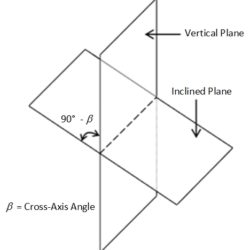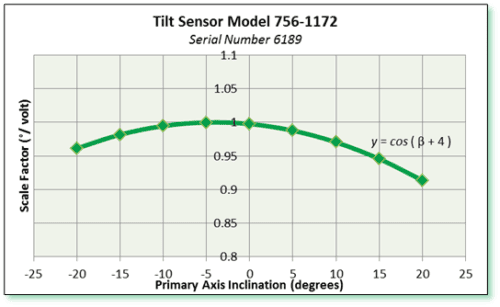Tilt sensors are calibrated by tilting them in a vertical plane and measuring their outputs at known angles. If a sensor is subsequently inclined by the cross-axis angle ß (Figure 1) and again rotated in a vertical plane, its output at the same known angles will be different than in the initial calibration.
We evaluated the cross-axis performance of a Model 756-1172 Tilt Sensor by inclining and then calibrating it at cross-axis angles from -20° to +20°. A signal conditioning module with analog voltage output (Jewell Instruments Model 84828) was used in the calibrations. In each test, we tilted the sensor in 0.5° steps over its full range of ±10°.
Calibration of this sensor yielded an obvious cosine relationship between the scale factor and the cross-axis inclination (Figure 2). The maximum scale factor occurred at a cross-axis angle of 4°. The cosine relationship can be summarized with the equation:
y=cos(?+4°)
where y is the normalized scale factor (°/Volt).
The 4° offset is a function of the asymmetrical platinum electrode placement within the electrolytic sensor and will vary slightly from sensor to sensor.
Conclusion: There is a cosine relationship between sensor output and cross-axis inclination. When necessary, this effect can be measured and compensated to improve accuracy.

